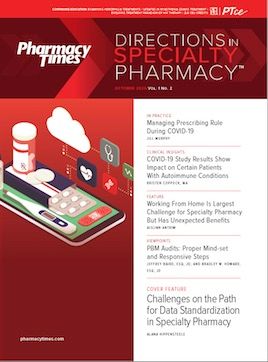Publication
Article
Specialty Pharmacy Times
Pharma Experts Highlight CSP Credential, NASP Survey Programs
Author(s):
Key Takeaways
- CSP credentials signify expertise in specialty pharmaceuticals and management, enhancing employability and professional impact.
- Certification involves education, experience, examination, and ongoing licensure and education requirements.
The latest survey programs out of NASP have found that the specialty pharmacy industry needs to focus on increased resources for implementing technology based solutions.
Having a certified specialty pharmacist (CSP) credential can help job seekers get hired and make a greater impact in the specialty pharmacy arena, according to a session at the National Association of Specialty Pharmacy (NASP) 2020 Annual Meeting & Expo Virtual Experience, which also offered a look at the latest NASP survey program results.1
CSP certification requires that individuals meet standardized criteria, usually comprising education and experience requirements along with passing a certification examination, according to Reed Kalna, PharmD, CSP, APh, outpatient pharmacy director, Kaiser Permanente San Rafael Medical Center in Northern California. Certification is a voluntary, standardized, objective tool to identify competent professionals and is available on a national level.
Certification demonstrates a proficiency in specialty pharmacy management duties in a variety of practice settings. Certification also indicates expertise in specialty pharmaceuticals, including those used for treating rare conditions, to employers, manufacturers, patients, and the public. As the specialty pharmacy field grows rapidly, a demand for clear standards and guidelines continues to grow, making CSP extremely important, according to Kalna.
“It helps prepare and provide confidence for technicians to identify and make meaningful, impactful interventions,” Kalna said. “It’s these rare conditions that help validate and provide understanding for certified pharmacy technicians.” Maintaining a certification includes as follows:
- an active license in good standing,
- an individualized learning path questionnaire,
- 30 continuing education hours,
- a background and code of conduct attestation, and
- an online recertification application.
NASP Survey Results
The latest survey programs out of NASP have found that the specialty pharmacy industry needs to focus on increased resources for implementing technology based solutions, according to Tom Jeffrey, president of SullivanLuallin Group, and Dick Schirber, vice president of planning and customer experience at Fairview Pharmacy Services. These surveys for patients, providers, and pharma aim to provide consistent satisfaction metrics and reporting required by pharmaceutical manufacturers and payers while providing pharmacies and industry stakeholders with an understanding of satisfaction drivers.
NASP conducted the 2018-2019 patient survey from July 2018 to June 2019 to measure the key performance areas affecting patient satisfaction, such as billing, and pharmacy and staff performance. The 59,518 surveys that were sent elicited 9212 responses, including 17 from participating specialty pharmacies, for an overall response rate of 15.48%.
The results showed that specialty pharmacies received a net promoter score (NPS) of 78.04; the score gauges the customer’s overall satisfaction with a company’s product or service and the customer’s loyalty to the brand. However, the national NPS for specialty pharmacies showed a slight decrease (78.0) compared with 2018’s results (78.6).
Jeffrey and Schirber said the key driving shift for respondents between 2018 and 2019 was the specialty pharmacist’s ability to coordinate and deliver a timely, accurate patient prescription. Looking ahead, they both emphasized the importance of focusing on optimizing the myriad steps and patient interactions that happen before the actual drug is dispensed. Further, improved access to, and communication with, pharmacy staff and shipment information can create more solutions, such as smartphone apps and enhanced website usability.
REFERENCE
- Jeffrey T, Kalna R, Schirber D. Understanding CSP credential and NASP survey programs overview. Presented at: National Association of Specialty Pharmacy 2020 Annual Meeting & Expo Virtual Experience; September 16, 2020.







